-
Lightroom Presets
- Mobile Presets
-
Photoshop
-
Learn
-
Support
-
Install
- Best Sellers
- Blog
By Tina Auten on | No Comments

It’s almost time to celebrate the Fourth of July - America's birthday!
And for many photographers, the draw of photographing fireworks is hard to resist. I don’t know about you, but some of my early attempts to capture fireworks resulted in a blurry mess of smoke! In frustration, I took to the Internet to figure out the secret of capturing those plumes of spectacular color and light - minus the smoke!
Believe it or not, photographing fireworks is not that difficult once you get the hang of it. And once you do, you will be WOWING your friends and neighbors with gorgeous firework photos!!

Try to find the ideal spot to set up your camera and tripod - an area where the fireworks can be easily seen with an unobstructed view. In our local town square, the fireworks are always shot from behind Town Hall. So once I find the perfect spot and set up my camera on a tripod, I compose my shot and lock focus on the Town Hall.
If you don’t have a building to focus on, try focusing on something in the foreground, such as a tree or line of trees. You can also put your lens on infinity focus (look for the ∞ infinity symbol on the barrel of your lens and manually rotate the barrel until the line is the infinity symbol), then compose your shot.
If you look closely at the image below, you can see the infinity symbol on the lens barrel. It's perfect for when you don't have an object in the foreground to lock focus on.
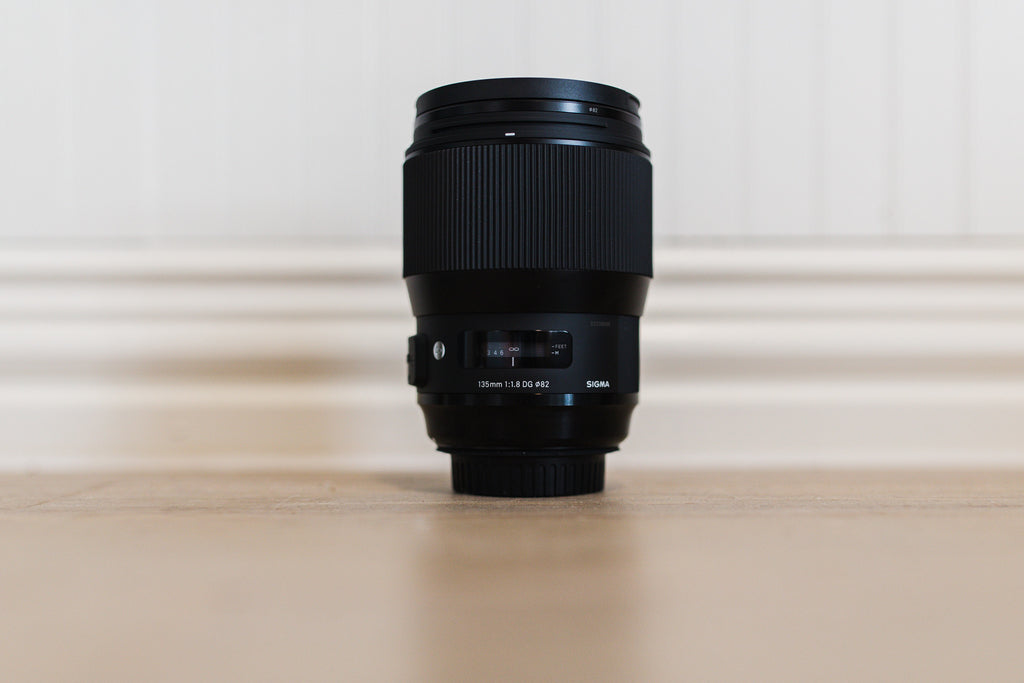
When photographing fireworks, camera settings are particularly important.
Put your camera in manual mode and turn down your ISO. Yes, turn it DOWN. The lack of light in the evening sky might seem counterintuitive, but you want a slower ISO. Typically, for firework images, I set my ISO between 100 and no higher than 400.
Next, stop down your aperture to between f/10 and f/16. You will want the shutter to be tiny, so less light hits the sensor, requiring the shutter to be open for an extended period of time to achieve a proper exposure. This is what creates the beautiful trails of color against the dark sky.
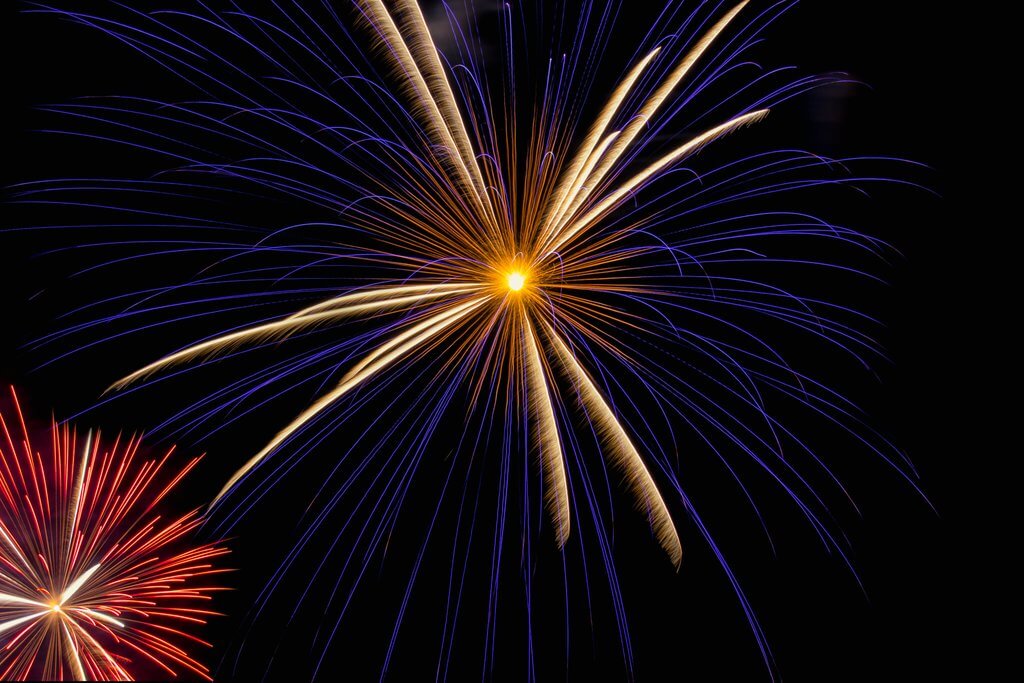
Setting the shutter speed will depend on how you are metering for available light. Personally, I switch to live view and meter for any available light in the sky.
Ideally, you will want your shutter speed to be very, very slow. My shutter speeds range from 2.5 seconds to 30 seconds. Live view is a great way to quickly meter a scene because you can see how the exposure looks and make shutter speed adjustments until your scene is pleasing to your eye.
Once your ISO, aperture, and shutter speed are set, take a few quick test shots; if you are happy with the overall exposure, you should be ready to go!.
The image below was taken at a concert, and I locked focus on the stage: settings - f/10, ISO 320, 25-second exposure with 35mm lens. Notice the ghosting of people who were moving in the foreground of my shot. For me, it added an element of movement that I really liked.
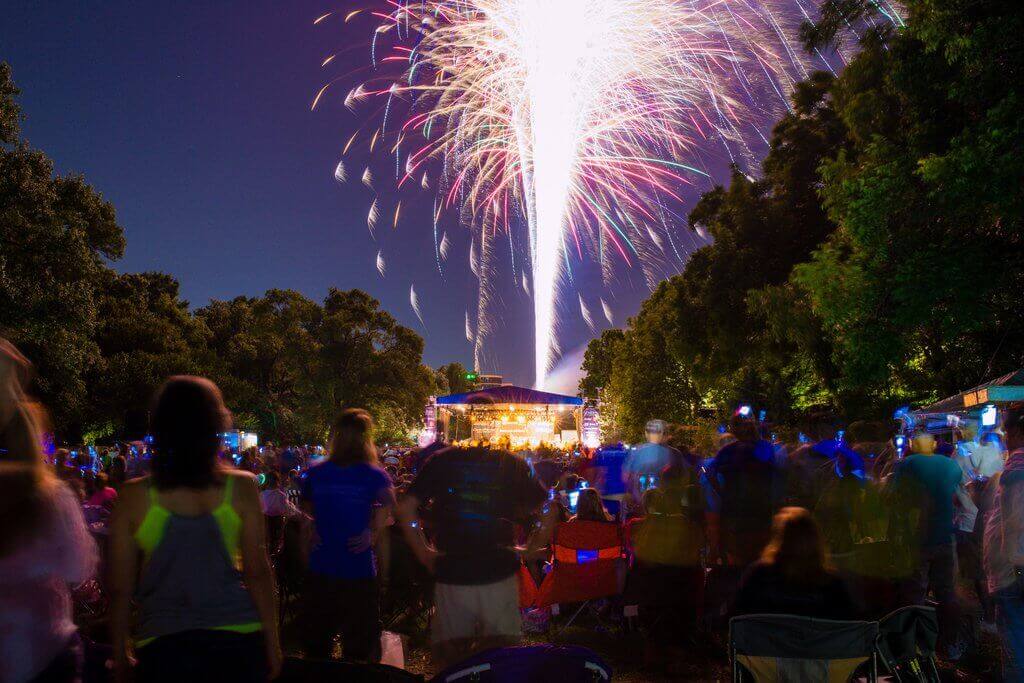
This next image was taken using infinity focus while in Montana a few years back and was taken during the summer when shooting fireworks finally clicked for me! It was pitch black; I was facing a lake and had no idea where the fireworks would appear! Settings - f/9, ISO 100, 3.2 seconds, 43mm focal length using 18-250mm lens on infinity.
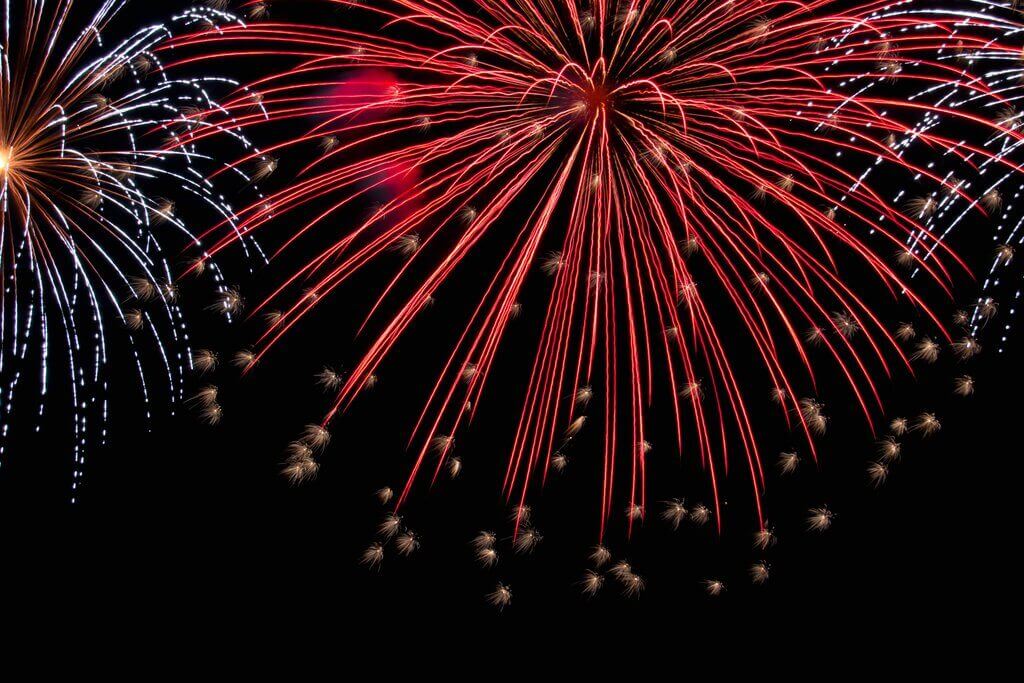
If you have a remote trigger, get it set up so that once the show starts, all you have to do is sit back and press the trigger button while you enjoy the show! If you do not have a remote trigger, set your camera for a 2-second delay so you won’t accidentally cause camera shake, which CAN happen even though your camera is on a tripod. Believe me, I did this with my old tripod, which wasn’t super stable for long exposures, and it was very frustrating!
For the following image, I adjusted the position of the camera, locked focus on the trees, and maintained a 25-second exposure, f/10, ISO 320. When using a super slow shutter, notice how the colors drift into the sky. This is a beautiful effect!
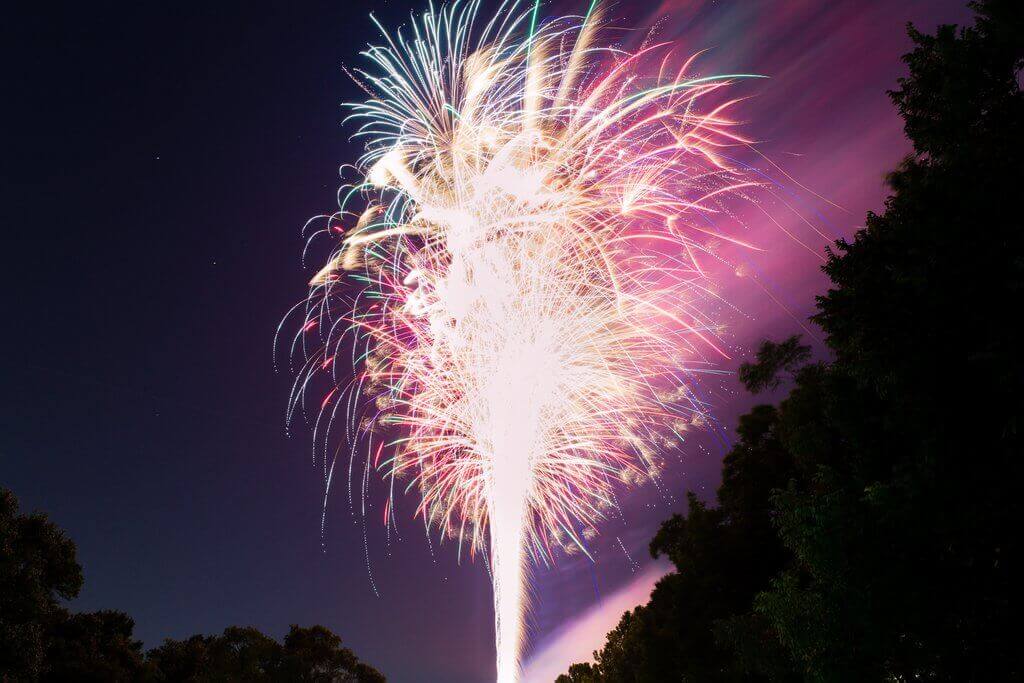
What lens should you use to photograph fireworks? This depends on how much of the scene you hope to capture.
I have used a 35mm to get a wider angle and take in the entire scene. I have also shot with an 85mm for a tighter view of the fireworks. A zoom lens can be very convenient, too, to quickly change your composition if you find that you are too tight or too wide. Remember, if you make composition adjustments, you will also need to readjust your focus lock.
Sometimes when I have several frames of beautiful fireworks but too much negative space, I bring one into Photoshop as a base image, then import several other frames as JPGs to composite onto the base image using a similar technique as a head swap. Once the image is positioned over the base image, I add a mask and brush off the negative space so that there are multiple firework bursts within a single frame (see image below). I then export the single composited image back to Lightroom, where I finish the edit. It's super easy!

Once the fireworks start and you hear the initial pop before the explosion of color, press the shutter. You will find a rhythm between the longer shutter speeds and when to engage the shutter using your remote trigger or delayed timer. After a few frames, check the preview of your images and adjust for exposure and/or composition as needed.
It might seem complicated at first, but I promise, photographing fireworks is pretty simple and can be very fun! Have a safe 4th of July, and happy shooting!
Do you have any questions or comments about Photographing Fireworks? Leave us a comment below - we would LOVE to hear from you! And PLEASE SHARE this tutorial using the social sharing buttons (we really appreciate it)!
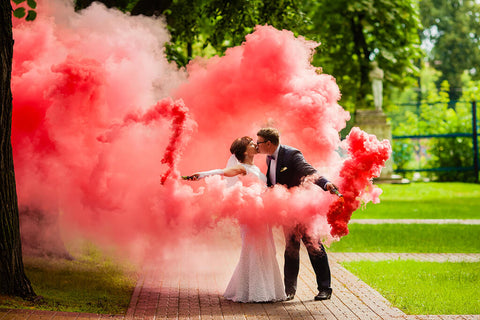
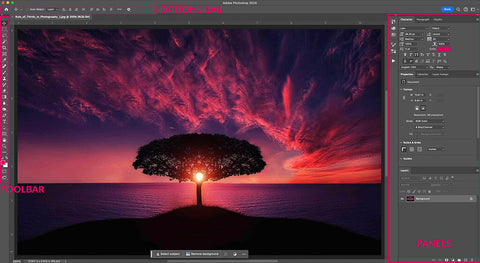
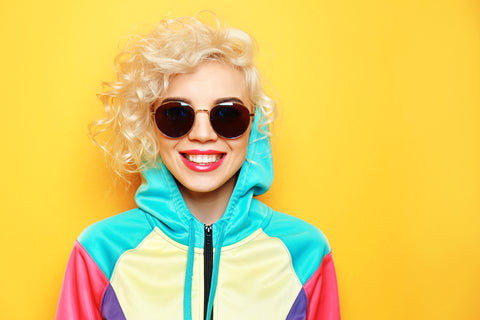
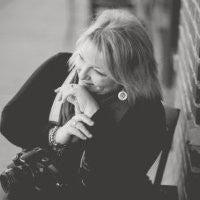
Tina is a Texas girl who is passionate about family, Friday nights under the lights, Mexican food, sunrise sessions on the beach, cold beer, and all things related to photography. Married for nearly 30 years to her best friend, they enjoyed life as an Air Force family while raising three children: Taryn (angel at 19), Bethany (28), Creighton (24), and grandparents to Caleb. Tina has the heart of a student and teacher, so she’s always eager to learn (and master) new interests and then share that knowledge with others. She is a natural light and lifestyle photographer in Southlake, Texas.

Comments